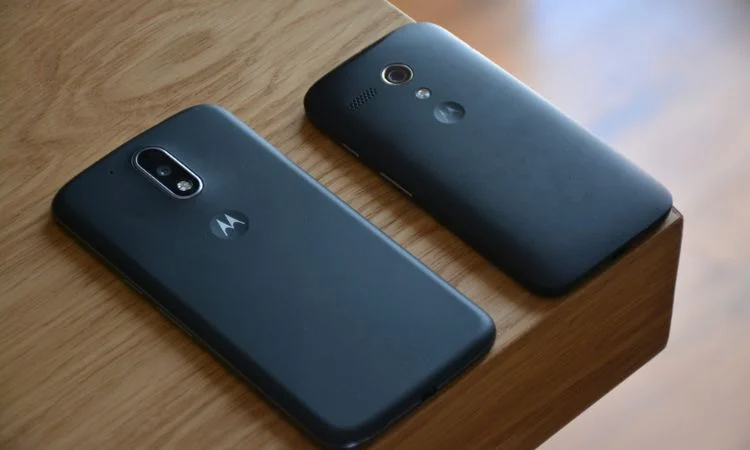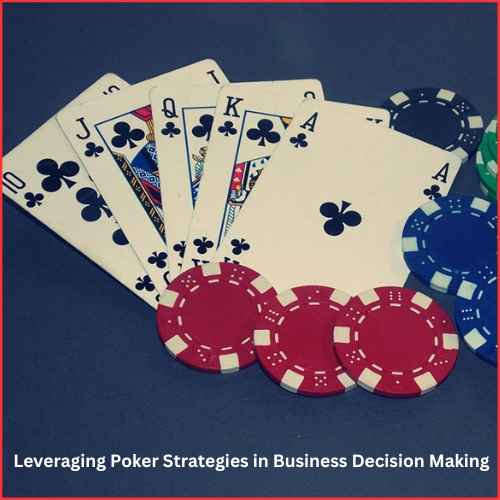Motorola, globally known as one of the best tech product manufacturing companies in the world, has faced a significant decline in its sales in a decade or two, comprising many causes that can answer the question of why Motorola Company failed.

Image credit- InspireIP
Mobile phones are the largely known device for which Motorola is known with its special features in an average price range. Still, in the last few years, this company has faced several obstacles in its journey and finally witnessed a huge decline in its revenue and growth.
Analyzing the whole story of the tech leader Motorola, we have found some of the major factors that contributed to the decline of the company’s sales and growth. Keep tuned in with the article in which we will mention a comprehensive analysis of Motorola’s failure.
| Sr. No. | Table of contents |
| 1 | Why Motorola Failed: A Comprehensive Analysis |
| 2 | Quick Analysis: Why Motorola Failed |
| 3 | Rise of Motorola |
| 4 | Net sales of Motorola Solutions worldwide from 2015 to 2022 |
| 5 | A Comprehensive Analysis: Why Motorola Failed |
| 6 | Motorola’s Acquisition by Google |
| 7 | Motorola Market Strategy |
| 8 | Conclusion |
Motorola Highlights
| Motorola Founded Year | 1928 |
| Founded By | Paul and Joseph Galvin |
| Market Capital | 6.183 Trillion |
| Headquarter | Illinois |
| No of Employees | 24K |
| Acquired by |
Quick Analysis: Why Motorola Failed
Failure of Motorola’s success involves different factors like its adoption of advanced technology, comprising the latest features, poor marketing strategies, lack of beneficial partnerships, and more. For a quick analysis, we mentioned some crucial causes of failure, which have been explained later in the down part of the article, so keep tuned.
- Strategic errors and missed opportunities
- Shortage of Innovative Ideas and Management
- Introduction of Advanced Mobiles like iPhones and Dynamic Market
- Focus on Quantity Over Quality
- Insider Trading and Stock Deficiency
The company didn’t pay attention to the feedback and customer reviews, which also worked as a reason for the lack of trust among the audience and led to the failure in the global market.
While understanding Motorola’s failure, we should also focus on its birth and its climax in the market, which spread its branding throughout the world. After a worse period, the brand is still trying to establish its existence, finding collaboration ways with tech pioneer Google.
Rise of Motorola
Its journey started in 1928 with the specialization in radio manufacturing technology as Gelvin Manufacturing Corporation. Later on, the company made several innovations in the tech world, like the first walkie-talkies for military use, in-car radio telephones, and pagers.
After passing the years, the company started dealing with expertise in communication devices, semiconductors, microprocessors, televisions, and barcode scanners.
Later on, Motorola started manufacturing mobile phones and became at the forefront of making the world’s first functioning cellular mobile phone in 1973. The company has worked impressively and provides the best-featured mobile phones with iconic devices like DynaTAC 8000 in 1984, MicroTAC in 1989, and StarTAC in 1996.
The company’s ability to create iconic sleek model mobile phones was witnessed globally with such devices, which was the most advanced technology at that time.
Net sales of Motorola Solutions worldwide from 2015 to 2022
| Year | No. of sales |
| 2015 | 5695 |
| 2016 | 6038 |
| 2017 | 6380 |
| 2018 | 7343 |
| 2019 | 7887 |
| 2020 | 7414 |
| 2021 | 8171 |
| 2022 | 9112 |
A Comprehensive Analysis: Why Motorola Failed
Many factors contributed to the failure of Motorola, and one such factor included the price-fixing conspiracy on its operations, which affected the company’s brand badly. Here we will discuss in detail points on each factor.
Strategic errors and missed opportunities
1. The decision to not move ahead with 3G technology: The market is a changing face of modernization, and going with the trend is the success tip for all the businesses that Motorola missed out on and failed in the market. One of the key reasons for the company’s failure was its decision not to go with the 3G technology, which was the need of the market and business world.
Due to its most favourable customer’s opinion of not being inclined towards 3G technology, the company also decided to not move ahead with the latest trend and earn the customer’s loyalty, but it missed the future market and its other customers’ trust from the company.
2. Struggle with software advancements: This is another factor that became an obstacle in the success path of Motorola, and this was its inability to keep up with software advancements in the mobile phone industry.
During the 2000s, the market was witnessing a change by holding the hand of software, and this was a driving factor for the success of other competitors like Apple and BlackBerry. Motorola still has the old-age clunky interface and inconsistent operating system, which also made its clients unsatisfied.
3. Misguided product strategy: The company was not willing to invest in terms of security and making smartphones and kept prioritizing its feature phones, whereas its competitors like Nokia and Blackberry focused on making new smartphones, which also contributed to the failure of Motorola.
4: Unwillingness to adopt Android Phones: The introduction of Android phones in the market was a game changer in the mobile phone industry, and these days people prefer to buy them so easily because they were not ready to go with the old-age operating system. Unfortunately, Motorola adopted this technology late when all its competitors had adopted it, and this delay became the contributor to its failure.
Shortage of Innovative Ideas and Management
1- Lack of Innovation in the Mobile Phone Industry: In the fast-paced world, going with innovative ideas and advanced technology is necessary for success. Motorola failed to keep its mobile phones updated with the advanced innovations and lack of new exciting products, which led to a decline in consumer interest.
Where Motorola declined to keep itself updated with the ongoing trends, other competitors like Apple and BlackBerry followed the trends by offering the latest iPhones and became the top mobile phone manufacturer in the world.
2- Leadership problems and strategic issues: Poor management and leaders’s decisions accelerated the challenges of Motorola. The company’s strategic changes in the leaders and their disrupting strategic planning and decision-making process. The lack of the company’s handset and network technology divisions led to conflict in the directions and missed opportunities for synergy.
3- The upcoming release of iPhones and challenging market dynamics
Apple introduced its most advanced iPhones in 2007, which revolutionized the mobile phone industry, and people started feeling the standard of having a compact-size computer in their hands as a mobile phone. The features of iPhones, like the iPhone’s sleek design, user-friendly interface, and app ecosystem, gain the attention of phone lovers from all across the world.
Where the iPhone-making company Apple works to make their device advance with the latest technology, others like Motorola failed to compete with iPhones and also eroded their market share. The company’s finest products, like Motorola Q, fell short when compared with the competitor’s best product, and this device lacked the integration of hardware and software that made the iPhone successful.
Focus on Quantity Over Quality
In the mobile phone industry, focusing on quality gives access to success and the iPhone maker Apple got this idea, which directed all its manufacturers to maintain the quality of their iPhones.
On the other hand, Motorola kept working on different model devices and missed the quality, which led to missing the valuable opportunity in the mobile phone industry.
Customers invest in trust and quality in place of quantity and variety; hence, they prefer branded mobile phones, which are a reward for the most advanced technology and good quality. Motorola gave its focus on its perks instead of earning the trust and loyalty of mobile phone lovers around the world.
Insider Trading and Stock Deficiency
Motorola was unable to compete with its competitors, and even though its loss became the news of circulation with the help of insider trading, the information of the mobile phone manufacturing caused the drop in stock.
The company’s overall performance fell due to various financial challenges, and stock loss is one of them, which was credited to the practice of insider trading and the circulating news about the company in the financial world.
People from all across the world lost their confidence in Motorola and decided to give up.
Motorola’s Acquisition by Google
Motorola found in the early period that the company needed to evaluate its strategic partnership, rebuild its market with some new features, and collaborate with today’s advanced tech pioneers.
Soon the company Motorola split into segments in 2011: one is Motorola Mobility, which focused on consumer devices and handsets, and the other is Motorola Solution. After this move, the tech pioneer Google acquired the company Motorola Mobility for $12.5 billion.
The mobile phone-making company Motorola, after reviving with the help of Google, made a new heroic entry in the mobile phone industry. It also got positive reviews from customers from all across the world.
Motorola Market Strategy
| Year | Share in % |
| 2004 | 15% |
| 2005 | 18% |
| 2006 | 21% |
| 2007 | 14% |
| 2008 | 9% |
| 2009 | 5% |
| 2010 | 2% |
| 2011 | 2% |
Conclusion
Motorola’s failure story has given the most valuable lessons to most mobile phone makers all across the world, and all the obstacles it faced to this point are still helping most companies to achieve success in the mobile phone industry. Today the generation of the most advanced technology mobile phones are featured with artificial intelligence, and a company like Motorola will take a decade to reach them at this point.















